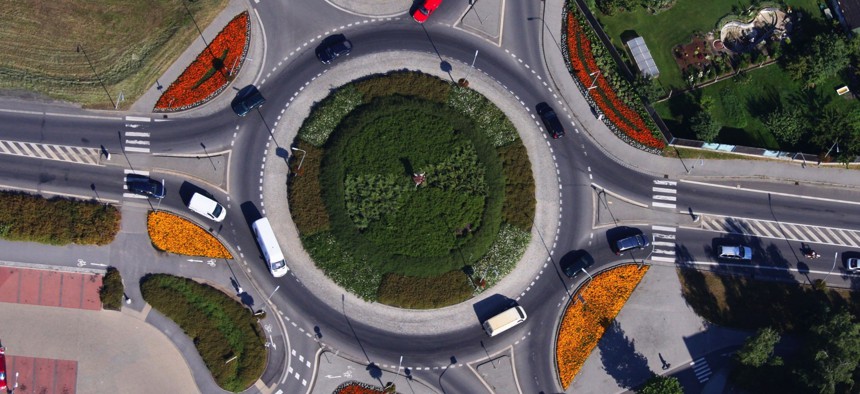Nation’s Roundabout Capital May Get Even More Traffic Circles

Malota / Shutterstock.com
Check out how this Indiana city leads the nation in non-signaled intersections.
If there’s one city in the United States that could be described as being the most obsessed with traffic roundabouts, it’s probably Carmel, Indiana. The city with around 85,000 residents just north of Indianapolis has been infatuated with the non-traditional traffic junctions since the late 1990s, led by a roundabout-loving mayor, Jim Brainard, who celebrated a resident’s record-setting 500-lap roundabout trip last October by declaring a “Roundabout World Record Day.”
Carmel, which has the most roundabouts of any city in the nation, currently has 95 of them and by spring will have 100. And as The Indianapolis Star reported this week, city leaders are moving to OK $242 million in bonds to add 32 more roundabouts . A vote on the roundabout expansion by city councilmembers could come by Jan. 18.
Why go the roundabout way?
According to the Carmel’s backgrounder page on its roundabouts :
Carmel builds roundabouts because of their safety record, their compatibility with the environments, their aesthetics and their ability to make it easier for pedestrians and bicyclists to navigate. In Carmel, where roundabouts have replaced signals or stop signs at intersections, the number of injury accidents has been reduced by about 80 percent and the number of accidents overall by about 40 percent.

The Federal Highway Administration has pointed to Carmel as a model city for its roundabouts implementation strategy, which beyond the physical construction of the traffic circles, has included an aggressive public information and outreach campaign :
The combination of outreach strategies, including public meetings with the mayor and City engineering staff, postcards, and an engaging branded project website enabled the city to successfully influence public perception of roundabout projects. Staff monitoring website hits during the construction of the roundabouts found that 15 percent of people went to the project website via a search engine, while over 80 percent of people either went to the site directly or were linked from a referring site, such as the City's roundabout website. Staff feel that these statistics show that they were able to engage the public in checking in regularly for project updates.
Check out some of Carmel’s roundabout-related videos.
Michael Grass is Executive Editor of Government Executive’s Route Fifty.
NEXT STORY: Rhode Island Truck Tolling Fracas Heads Into High Gear






